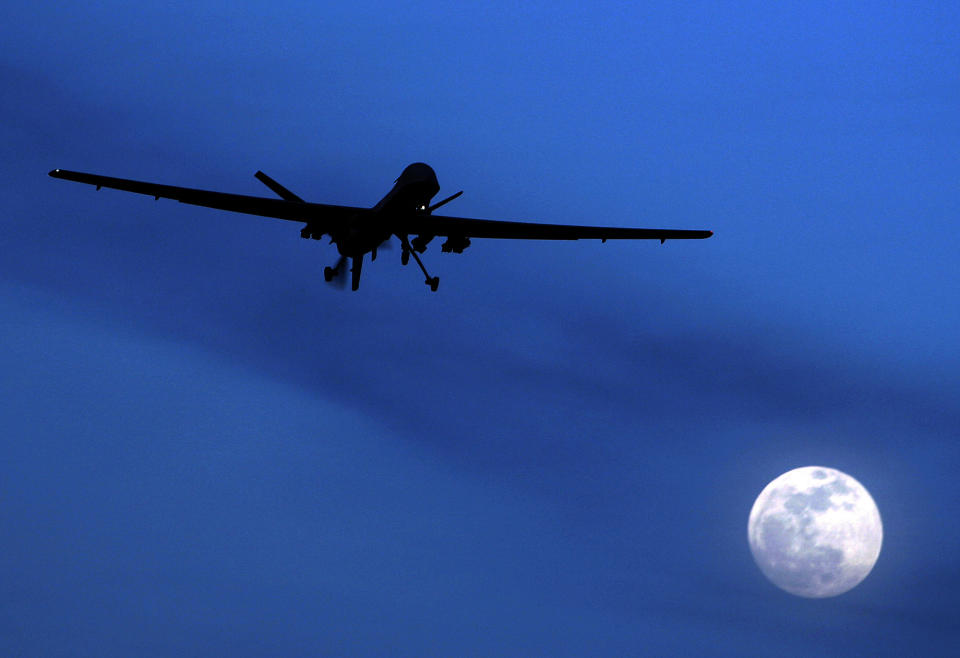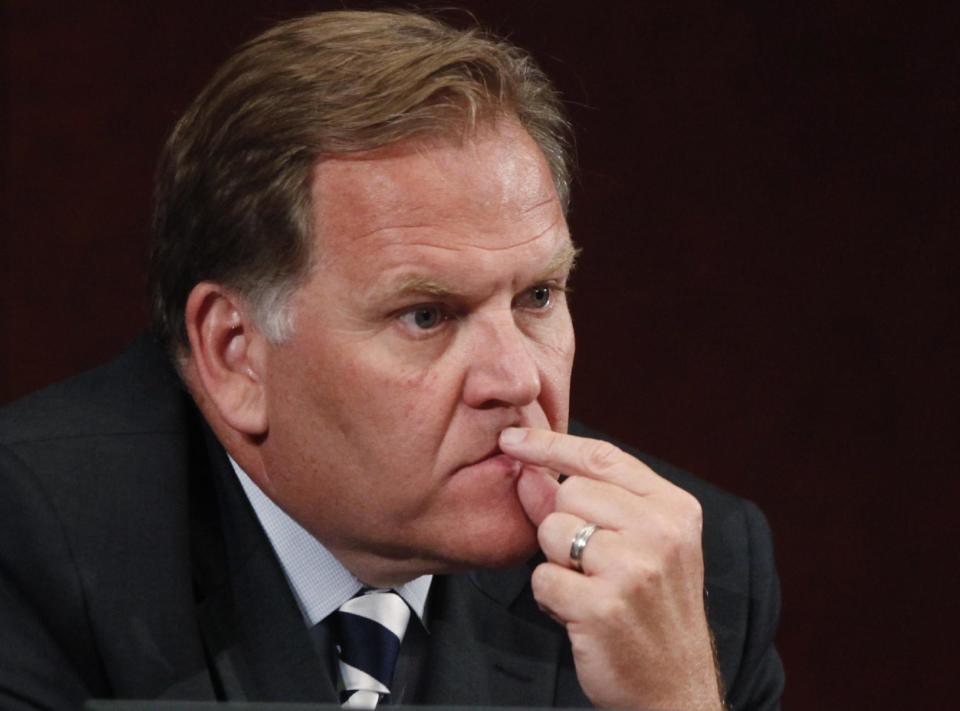Obama officials weigh drone attack on US suspect
WASHINGTON (AP) — The case of an American citizen and suspected member of al-Qaida who is allegedly planning attacks on U.S. targets overseas underscores the complexities of President Barack Obama's new stricter targeting guidelines for the use of deadly drones.
The CIA drones watching him cannot strike because he's a U.S. citizen. The Pentagon drones that could are barred from the country where he's hiding, and the Justice Department has not yet finished building a case against him.
Four U.S. officials said the American suspected terrorist is in a country that refuses U.S. military action on its soil and that has proved unable to go after him. And Obama's new policy says American suspected terrorists overseas can only be killed by the military, not the CIA, creating a policy conundrum for the White House.
Two of the officials described the man as an al-Qaida facilitator who has been directly responsible for deadly attacks against U.S. citizens overseas and who continues to plan attacks against them that would use improvised explosive devices.
The officials said the suspected terrorist is well-guarded and in a fairly remote location, so any unilateral attempt by U.S. troops to capture him would be risky and even more politically explosive than a U.S. missile strike.
White House press secretary Jay Carney said Monday he would not comment on specific operations and pointed to Obama's comments in the major counterterrorism speech last May about drone policy.
"When a U.S. citizen goes abroad to wage war against America and is actively plotting to kill U.S. citizens, and when neither the United States, nor our partners are in a position to capture him before he carries out a plot, his citizenship should no more serve as a shield than a sniper shooting down on an innocent crowd should be protected from a SWAT team," Carney said, quoting from Obama's speech last year.
Under new guidelines Obama addressed in the speech made to calm anger overseas at the extent of the U.S. drone campaign, lethal force must only be used "to prevent or stop attacks against U.S. persons, and even then, only when capture is not feasible and no other reasonable alternatives exist to address the threat effectively." The target must also pose "a continuing, imminent threat to U.S. persons" — the legal definition of catching someone in the act of plotting a lethal attack.
The Associated Press has agreed to the government's request to withhold the name of the country where the suspected terrorist is believed to be because officials said publishing it could interrupt ongoing counterterror operations.
The officials spoke on condition of anonymity because they were not authorized to discuss the classified drone targeting program publicly.
House Intelligence Committee Chairman Mike Rogers, R-Mich., complained last week that a number of terrorist suspects were all but out of reach under the administration's new rules that limit drone strikes based on the target's nationality or location. Two of the U.S. officials said the Justice Department review of the American suspected terrorist started last fall.
The senior administration official confirmed that the Justice Department was working to build a case against the suspected terrorist. The official said, however, the legal procedure being followed is the same as when the U.S. killed militant cleric and former Virginia resident Anwar al-Awlaki by drone in Yemen in 2011, long before the new targeted killing policy took effect.
The official said the president could make an exception to his policy and authorize the CIA to strike on a onetime basis or authorize the Pentagon to act despite the possible objections of the country in question.
The Justice Department, the Pentagon and the CIA declined to comment.
If the target is an American citizen, the Justice Department is required to show that killing the person through military action is "legal and constitutional"— in this case, that the Pentagon can take action against the American, as the administration has ruled him an enemy combatant under the Authorization for Use of Military Force, a resolution Congress passed a week after the 9/11 attacks to target al-Qaida.
"So little has changed since last year, when it comes to government secrecy over killings," said Amnesty International's Naureen Shah on Monday. "The policy is still the stuff of official secrecy and speculation, when it should be a matter of open debate and explicit constraints."
The administration says U.S. drones have killed four Americans since 2009, including al-Awlaki, who officials said was actively plotting to kill U.S. citizens.
Attorney General Eric Holder said the three other Americans were killed by drones, but were not targeted. The three are Samir Khan, who was killed in the same drone strike as al-Awlaki; al-Awlaki's 16-year-old son, Abdulrahman, a native of Denver who was killed in Yemen two weeks later; and Jude Kenan Mohammed, who was killed in a drone strike in Pakistan.
The case has galvanized congressional opponents of Obama's plan to transfer drones from the CIA to the Defense Department. Before the plan was announced, either CIA or Pentagon drones could go after terrorist targets, even if they were U.S. citizens. The CIA could also fly drones in areas where host countries might object. But by law, the Pentagon can only strike in war zones, in countries that agree to U.S. counterterrorism action or in lawless areas like parts of Somalia where that government's security forces cannot reach. Even then only al-Qaida-linked suspects can be targeted.
"It is very clear that there have been missed opportunities that I believe increase the risk of the lives of our soldiers and for disrupting operations underway," Rogers said last week.
U.S. officials said both Senate and House appropriators have blocked funding that would transfer the CIA's stealth RQ-170 drone fleet to the Pentagon. Some lawmakers want the White House to first come up with a fix for targeting suspects in areas where the Pentagon is banned from operating — either by leaving some part of the CIA operation running or by granting the Pentagon authority to strike covertly despite the location — meaning they could legally deny the operation.
Lawmakers like Senate Intelligence Committee Chairwoman Dianne Feinstein, D-Calif., have also objected to the shift to the Pentagon, arguing that the CIA has more experience flying drones. U.S. officials say Pentagon chiefs defending their drone program in closed congressional session last week pointed out that the same cadre of Air Force pilots fly both the CIA and the Pentagon drones.
___
Associated Press writer Nedra Pickler contributed to this report.
___
Online:
Policy and procedures for the use of force in counterterrorism operations outside the U.S.: http://1.usa.gov/1dy7de4
___
Follow Kimberly Dozier on Twitter: http://twitter.com/kimberlydozier



